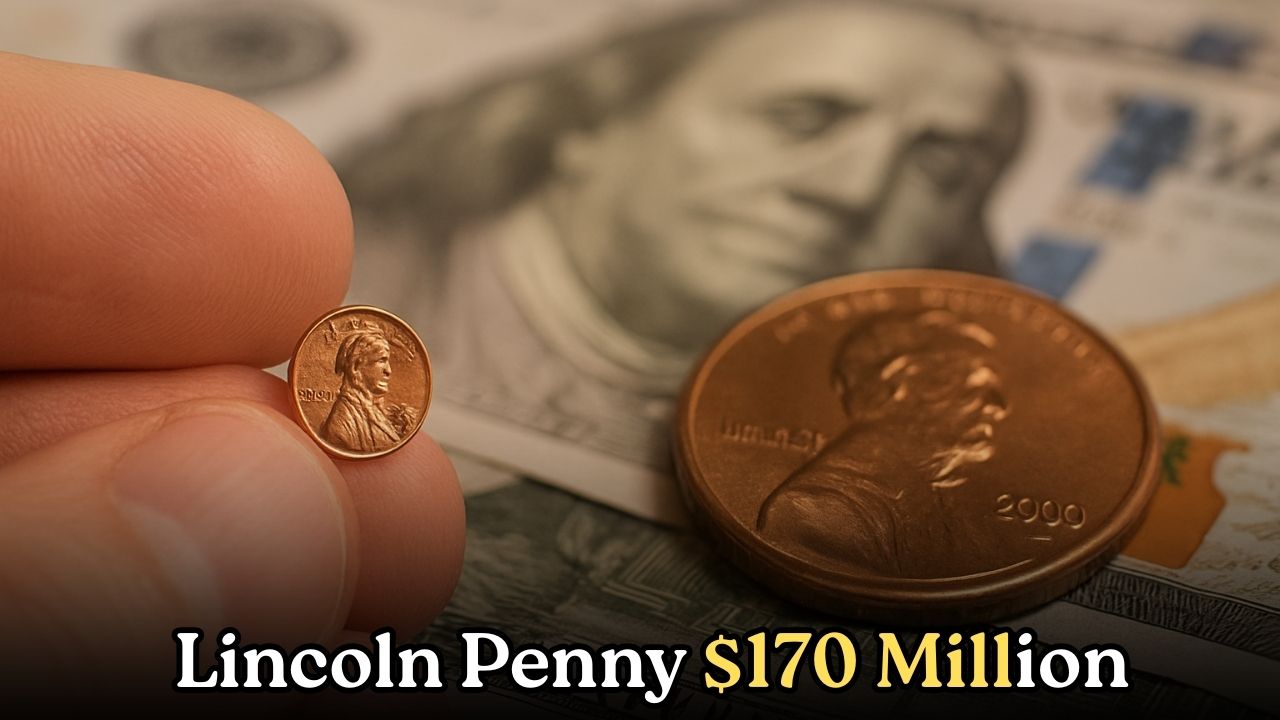Lincoln Penny – The idea of a tiny Lincoln penny being worth an astonishing $170 million might sound unbelievable, but rare coins have always fascinated collectors and investors. Over the years, certain pennies have become incredibly valuable due to unique minting errors, limited production, or historical significance. These small copper or bronze coins, often overlooked in spare change, can sometimes hold life-changing value. Experts explain that collectors are always on the lookout for rare features such as double dies, off-center strikes, or unique dates like the 1943 copper penny. A Lincoln penny with such extraordinary rarity could skyrocket in value, attracting international bidders and passionate coin enthusiasts willing to pay unimaginable sums. While the $170 million figure may seem exaggerated, it highlights the intense demand and excitement within the numismatic world. For ordinary people, this serves as a reminder to never underestimate the change in their wallet—because that tiny coin could turn into a fortune overnight.
Why Some Pennies Are Worth Millions
The value of a penny is not just in its face value, but in its rarity and demand among collectors. A small difference such as being minted in the wrong year, having a double die impression, or being struck on the wrong material can make a penny worth thousands or even millions. For example, the 1943 copper penny, produced by mistake when most were made from steel during wartime, has become legendary in the coin market. Collectors compete fiercely for such unique pieces, driving their value higher with every auction. Historical significance also adds weight—pennies minted during key years or with unique features often turn into treasures. The market for rare coins continues to grow, and stories of small coins selling for millions fuel public interest. This is why every collector encourages people to check their loose change carefully, as even the smallest coin might carry a hidden fortune.
The Legend of the $170 Million Penny
The buzz around a Lincoln penny allegedly valued at $170 million has sparked debate and curiosity among enthusiasts. While some reports may exaggerate the exact amount, there is no denying that certain coins have fetched astonishing prices at auctions. Rare finds with unique minting errors or historical importance can attract wealthy collectors ready to pay beyond imagination. For instance, past auctions have seen rare pennies cross the million-dollar mark, proving that a small coin can hold monumental value. The $170 million story reflects the possibility of how a one-of-a-kind piece could break all records if discovered. Even though the actual sale of such a penny remains unverified, the fascination shows how strong the demand for rare coins is. It also inspires everyday people to keep an eye on their coins, because no one truly knows what hidden treasures might be waiting in their wallet or jar of change.
How to Identify a Rare Lincoln Penny
Spotting a valuable penny requires careful observation and knowledge of minting details. Collectors suggest looking closely at the year of minting, the metal composition, and any visible errors such as doubling of numbers or letters. Rare pennies like the 1909-S VDB, the 1943 copper penny, and the 1955 double die are prime examples of coins worth much more than their face value. Tools like magnifying glasses and online coin guides can help identify unusual features. Condition also plays a key role—a penny in mint or near-mint condition can fetch far more than a worn-out coin of the same rarity. Some collectors even send coins for professional grading to establish authenticity and increase value at auction. With a little research and attention, even an ordinary person could uncover a penny worth thousands or potentially millions, turning everyday change into a historic treasure.
Should You Check Your Pocket Change?
The idea of finding a fortune in your pocket change is thrilling, and for many people, it has actually happened. Stories of individuals stumbling upon rare coins while sorting through old jars or receiving them as change at a store continue to surface. While the odds of finding a $170 million penny are extremely slim, valuable coins are still out there in circulation. Checking your coins costs nothing and could lead to a big discovery. It is especially worth looking at older pennies, as they are more likely to hold unique minting variations or errors. Experts recommend learning about key rare dates and features so you can recognize a treasure when you see one. Even if you never find a multi-million-dollar coin, the process of collecting can be fun, educational, and rewarding. Who knows—your next handful of change could hold more than just cents, it could hold a piece of history.
